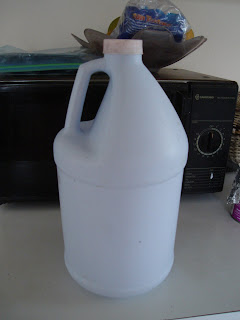Runaway Chronicle
Tales from Belize, Guatemala, Argentina, Kenya, and Tanzania
22 April 2007
15 April 2007
Holy Cow! Queso blanco
Earth Day Fair at UB is in 3 days.
On Friday, my friend Carlos gave me a gallon of “fresh from the cow”, whole milk, unpasteurized. He’d bought too much at the market and didn’t want it to go to waste.

Anyway, I’m not much of a milk drinker and I had a lot of milk on my hands, so I boiled up about half of it, poured the hot milk into 2 glass jars, let it cool just a bit, dropped a couple tablespoons of store bought yogurt into each, put both in my mini cooler for insulation overnight and 12 hours later, voila! About 5 cups of plain yogurt. I’ve had mixed results with this process in the past, however, this is, without doubt, the most successful batch yet.
Still milk remains, so, I spent this morning investigating potential dairy product experiments I could undertake for the day. I grew up in the ‘burbs, and thus, I don’t have even a basic knowledge or understanding for example, of what is the difference between whole milk, heavy cream, half and half, in terms of the degree of processing, which has had the fat/whey removed, etc.

NO-RENNET QUESO BLANCO (LATIN AMERICAN WHITE CHEESE)
Heat-acid or no-rennet Queso Blanco is a white, semi-hard cheese made without culture or rennet. It is eaten fresh and may be flavoured with peppers, caraway, onions, etc. It belongs to a family of "frying cheeses" which do not melt and may be deep fried or barbecued to a golden brown for a tasty snack. Deep fried Queso Blanco may be steeped in a sugar syrup for a dessert dish or added to soup as croutons. The procedure given here is similar to the manufacture of Indian Paneer and Channa which is made by adding acid to hot milk. Ricotta cheese is also made by heat-acid precipitation of proteins from blends of milk and whey. Latin American white cheese is also made by renneting whole milk with little or no bacterial culture. Rennet Queso Blanco is also useful as a frying cheese because its lack of acidity gives it low meltability.
Procedure -
1. Heat milk to 80C for 20 minutes.
2. Add vinegar (5% acetic acid) at the rate of about 175 ml per 5 kg of milk. Vinegar should be diluted in two equal volumes of water and then added slowly to the hot milk until the whey is semi-clear and the curd particles begin to mat together and become slightly stretchy. You should be able to stretch a piece of curd about 1 cm before it breaks. It may not be necessary to add all of the vinegar.
3. Separate the curd by filtering through a cloth bag until free whey is removed.
4. Work in salt (about 1%) and spices to taste.
5. Press the curd (high pressure is not required).
6. Package curd in boilable bags (vacuum package if possible) and place in boiling water for 5 minutes to sterilize the surface and prevent mould growth.
7. Queso Blanco may keep for several weeks if properly packed but should be eaten as fresh as possible.
http://www.foodsci.uoguelph.ca/dairyedu/cheese2.html






















